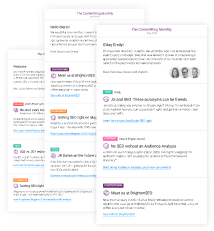Google Search Console Rolls Out Beta Insights
Google Search Console has made it easier for content creators and publishers to monitor their content’s performance.
This free SEO tool has rolled out the beta of their new Search Console Insights, which helps content creators acquire more data to make better and more informed decisions about their future content.
The platform allows publishers and content creators to answer these questions:
- What are their best-performing pieces of content?
- How are their new pieces of content performing?
- How do people discover their content across the web?
- What are their site’s top and trending queries on Google Search?
- What other sites and articles link to their site’s content – and did they get any new links?

Currently, the feature is in a closed beta, which is only available to a group of users who have already received an official email. But Google aims to open it to more users soon.
If you are a Search Console Insights beta user, you have three options for how to access it.
- Use the link Google has provided beta users with via its onboarding email.
- Use the
“search console insights”query in Google Search. - Use the
Search Console in Search resultsfeature. “If you search on Google for a query that your beta listed site ranks for, you should then see a Google powered result titled “Search performance for this query” at the top. That result will contain an entry point to Search Console Insights,” Google has noted in their official announcement (opens in a new tab).
Chrome to highlight great user experiences on Android
With the planned move to the Core Web Vitals, which highly emphasize user experience (opens in a new tab) and page speed as important ranking factors, Google has dedicated its work towards “providing users with a fast, responsive, and delightful browsing experience.”
And now, Google has announced they will include a feature in Chrome that will highlight high-quality user experiences on the web to Android users (opens in a new tab). The feature will start with labeling fast links via the link context menu.
The labeling will be based on the signals from the Core Web Vitals metrics. Links to pages that have historically met or exceeded all the Core Web Vitals metrics thresholds will be displayed with a new “Fast page” badge.

It’s not certain when the Core Web Vitals will become a ranking factor. Google has said they will announce it six months ahead.
To check if your content can meet the Core Web Vitals threshold and be labeled with a Fast Page badge, you can surface information and recommendations using Google’s developer tools (opens in a new tab):
The Search Console team has also recently added a report dedicated to Core Web Vitals (opens in a new tab) to that platform as well.
The labeling feature will be rolled out starting in Chrome 85 Beta.
Bing confirms using engagement metrics as a ranking factor
While Google claims that they don’t care about the engagement websites have – click-throughs, time spent on site, etc. – Bing has admitted that they use it as one of their ranking factors.
In a recent vlog by Barry Schwartz (opens in a new tab), Microsoft’s principal program manager Fabrice Canal said (opens in a new tab): “We do what is the best for the customer. If we found that this is very useful data and we believe it is useful data for the ranker, why not use this data. What’s preventing this?
People are searching, providing insights on what they are looking for. We do believe that this is useful data that is helping us to help them to retrieve the best content, satisfying customers or driving the best content on the internet.”
In the same interview, Christi Olson (opens in a new tab), Head of Evangelism at Microsoft, added “You can have an amazing page that ranks really well, but if users spend a second or two on the page and they click back, there’s something wrong with it. Is it a load issue? Is there a 500 issue? Is something happening?”
“Because if it doesn’t matter the content’s amazing, if users aren’t staying on that site, maybe they’ve put a pop-up in. There’s something going on there, that is a signal that regardless of what content is on the page, the users are saying it does not add value.”
However, Olson also added that Bing doesn’t use these metrics one by one. The search engine looks at them in a more “holistic” manner, meaning that engagement doesn’t necessarily have to play such a crucial role in the ranking process.
Title tag separator discussion takes over SEO Twitter
What kind of separator do you use for your title tags?
Is it Your site title - Another Element using a dash
or Your Site Title | Another Element including a pipe?
The same question was asked by Bill Hartzer on Twitter, and it immediately sparked a heated discussion.
The general conclusion coming from the debate can be summarized as such:
The most common advice reflected the length of your title tag. If you have a long title, a pipe would be better, because it has less pixels saving some space for letters.
The right choice of a proper separator type also depends on whether you have any element or an entity in your title. Are you referring to a product name? Use a dash.
Are you referring to a specific brand or a website? If so, users in the Twitter thread recommend using the pipe.
But at the end of the day, it really depends on your aesthetic point of view. As the majority of Twitter users agreed, using a dash or pipe doesn’t have much of an impact on your SEO.
Keep up to date!
Want to be kept up-to-date on all things SEO?
Sign up for our newsletter and follow us on social media:





